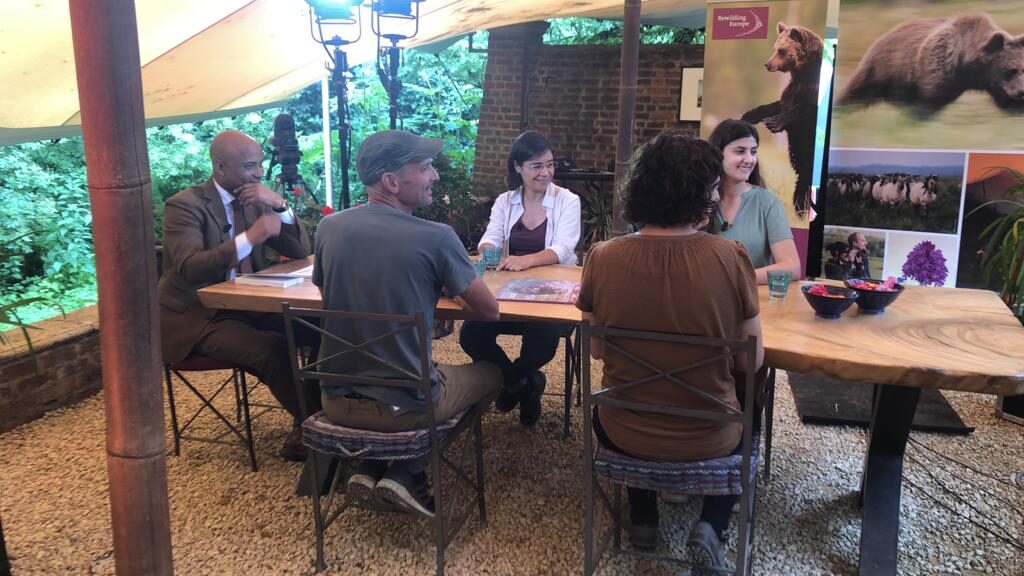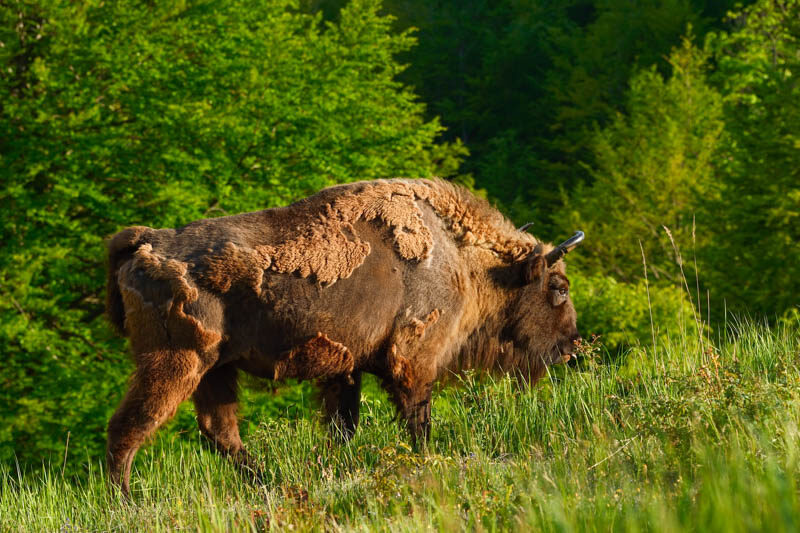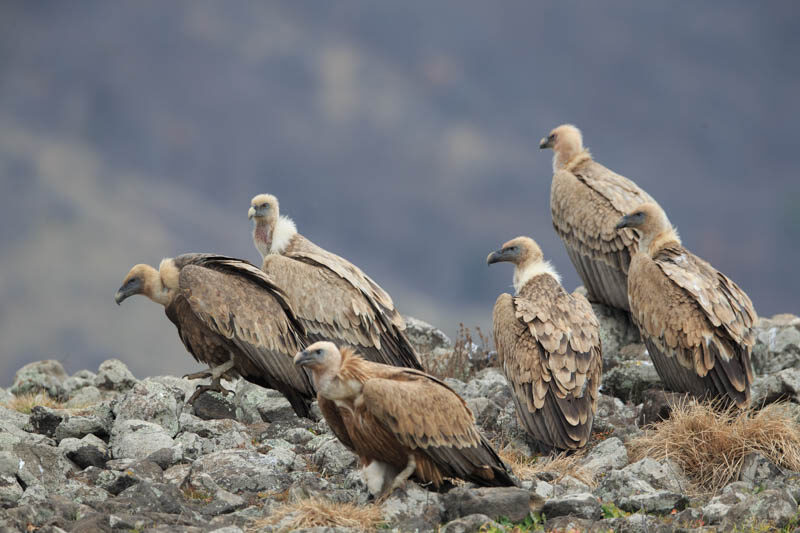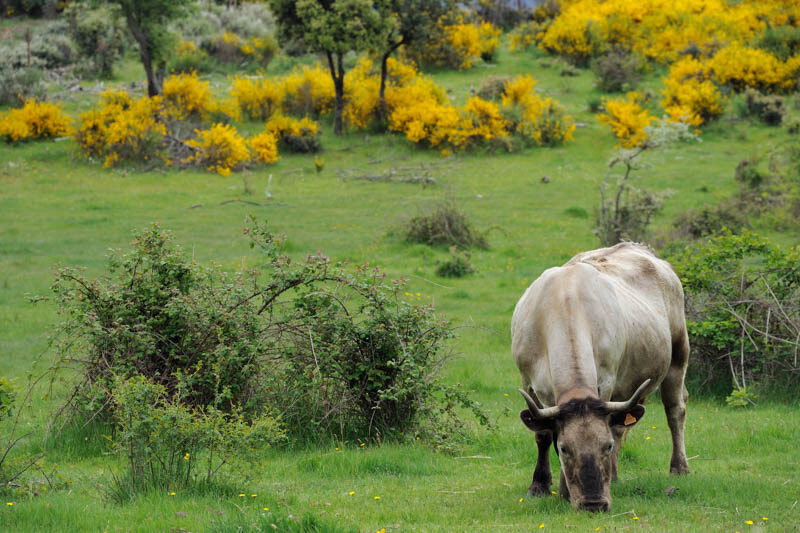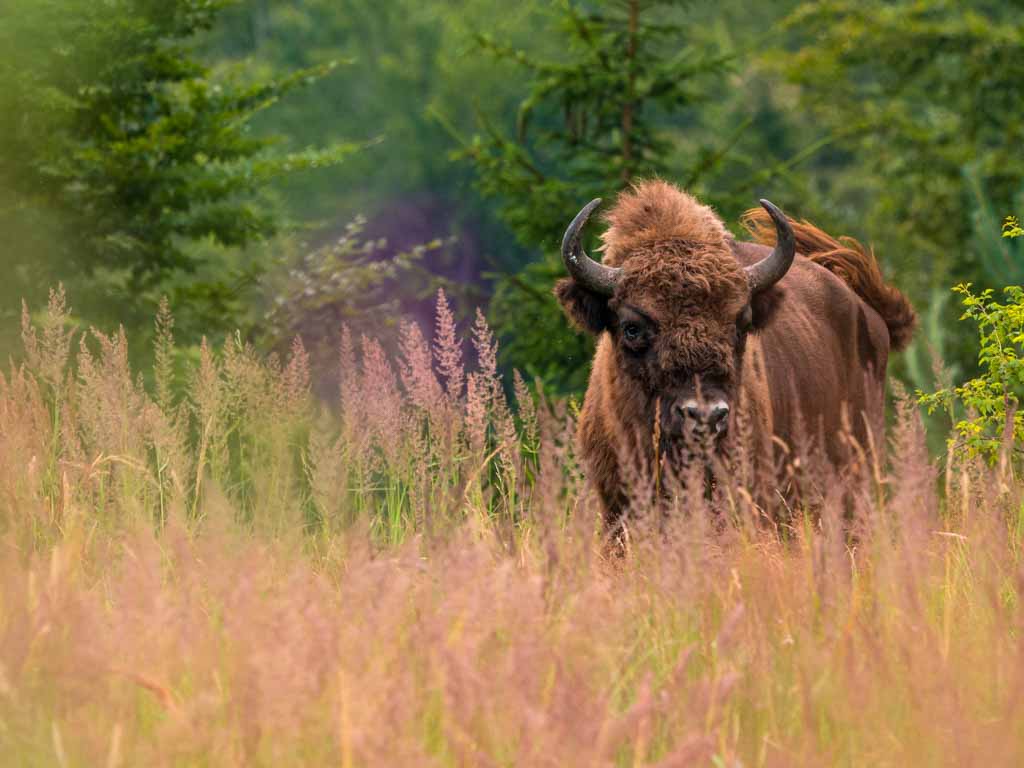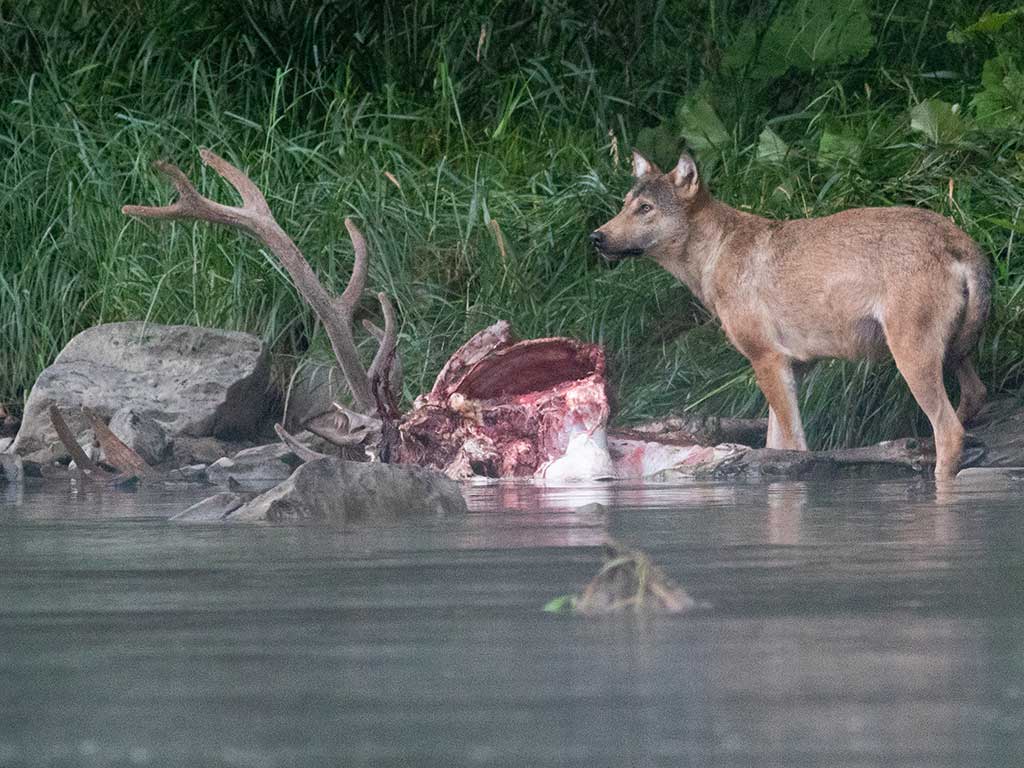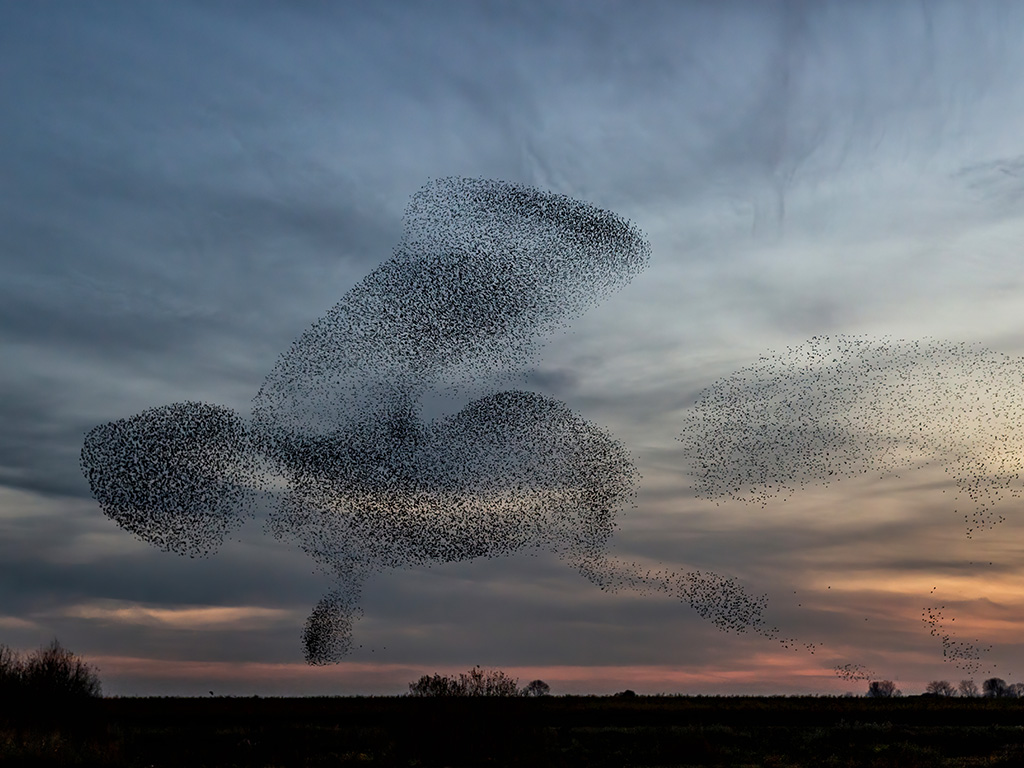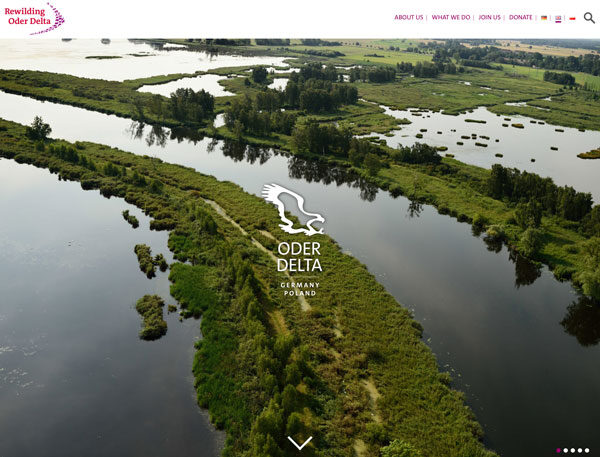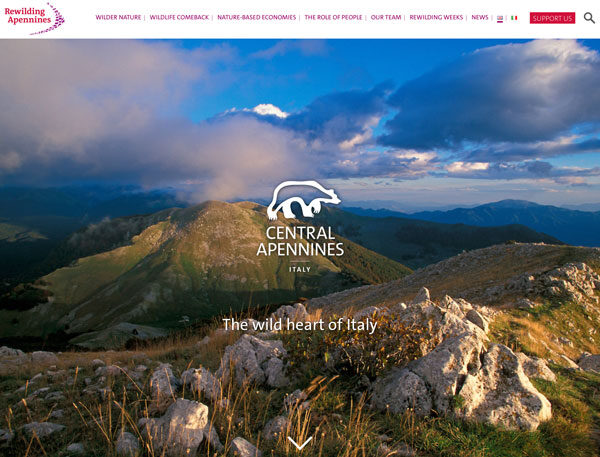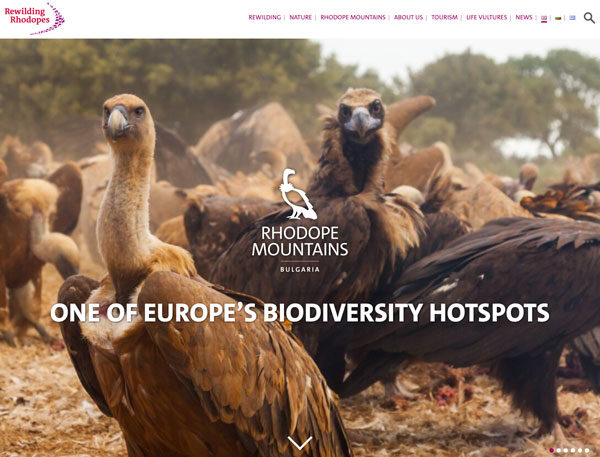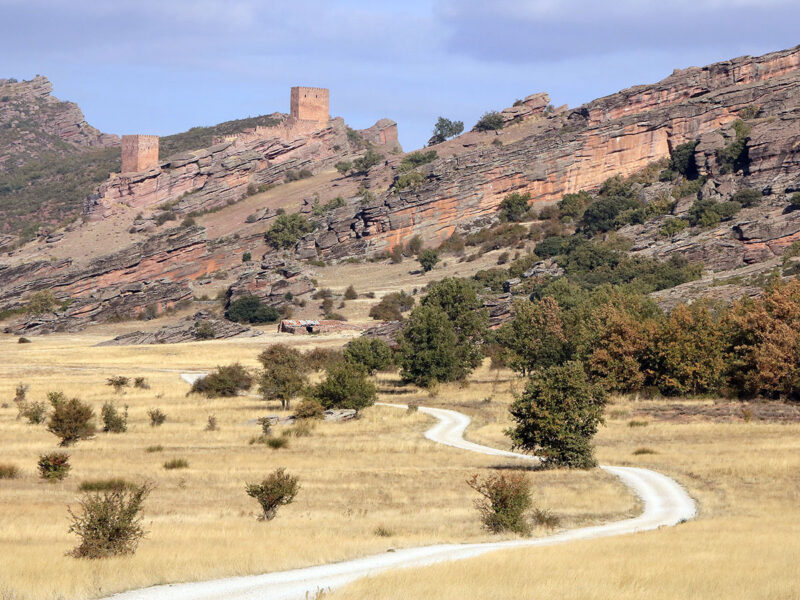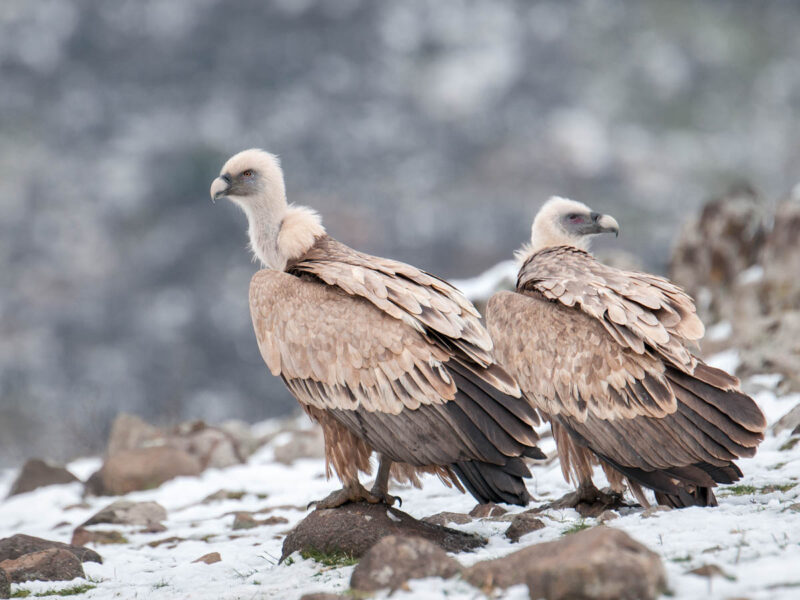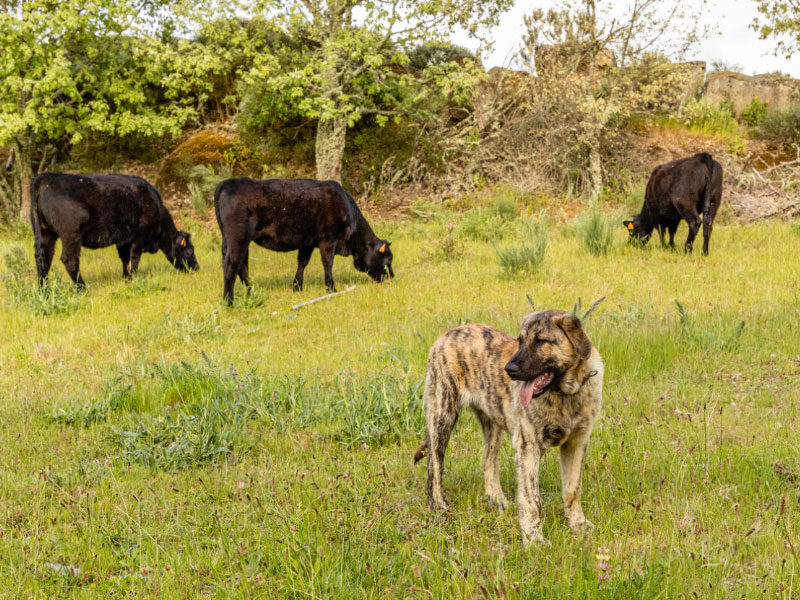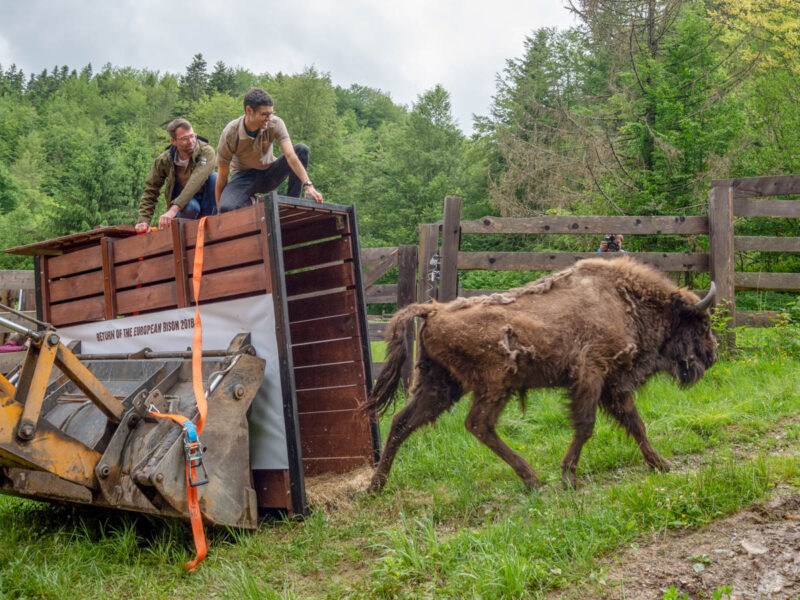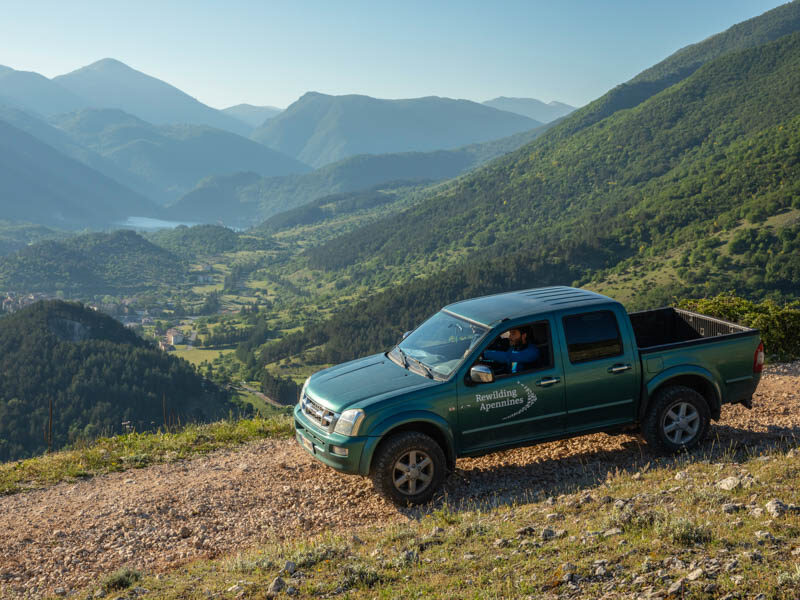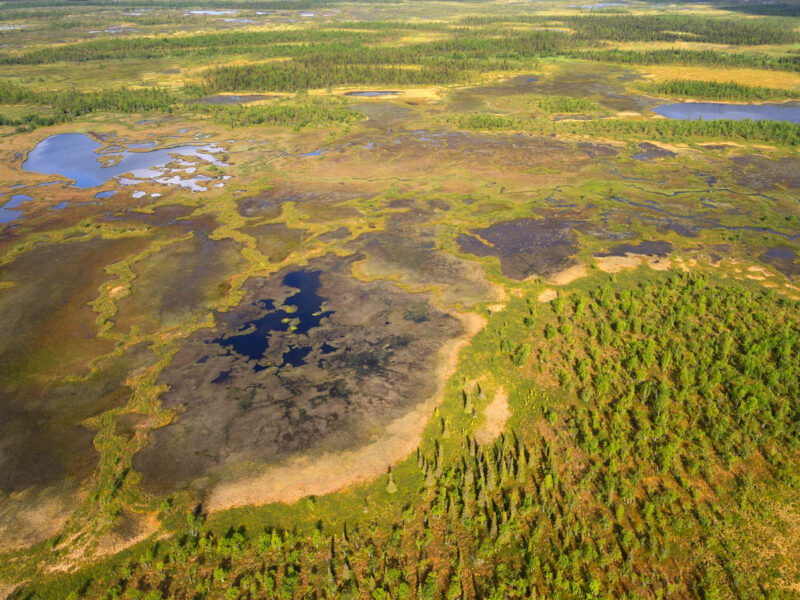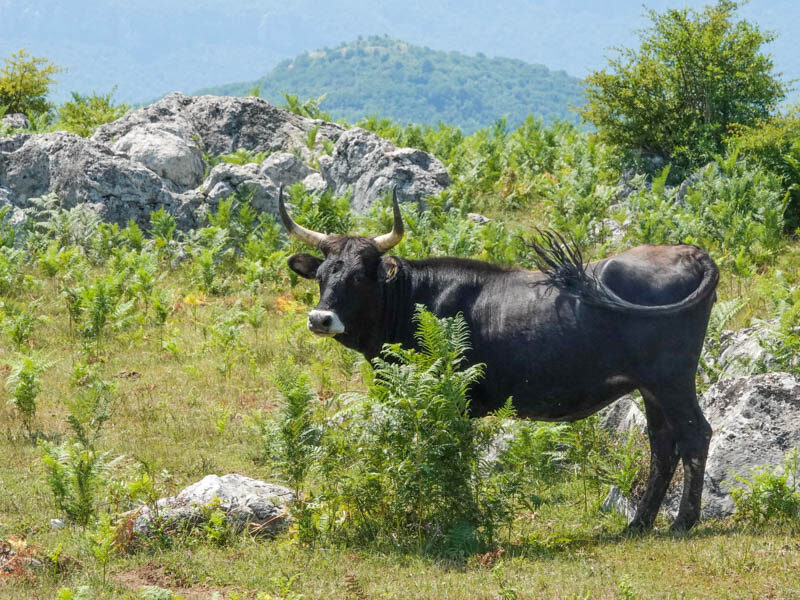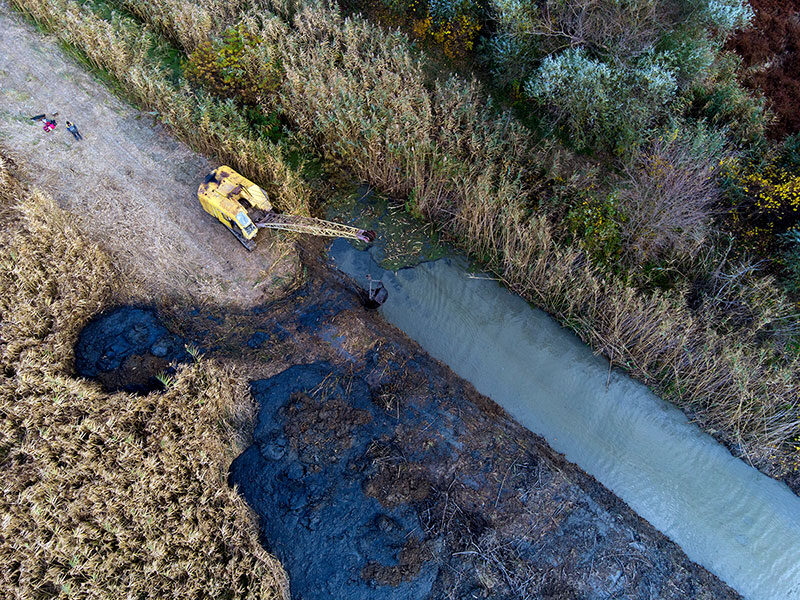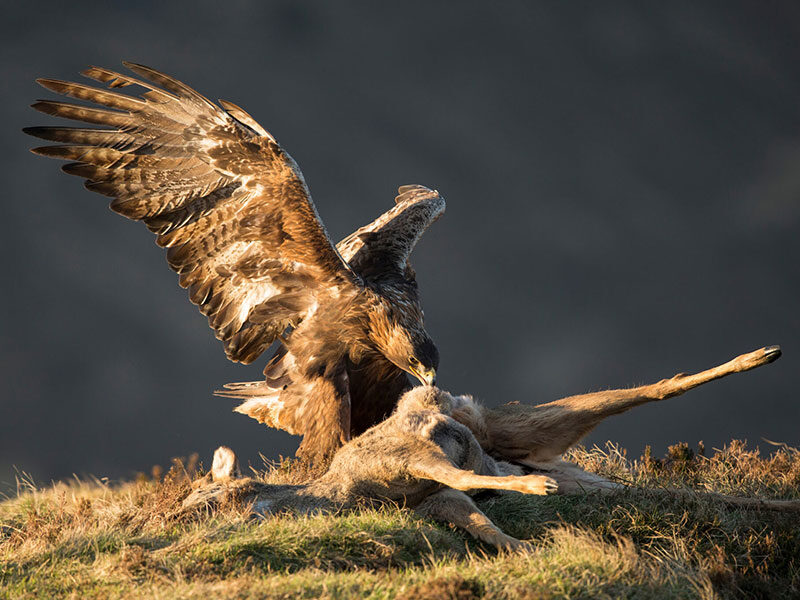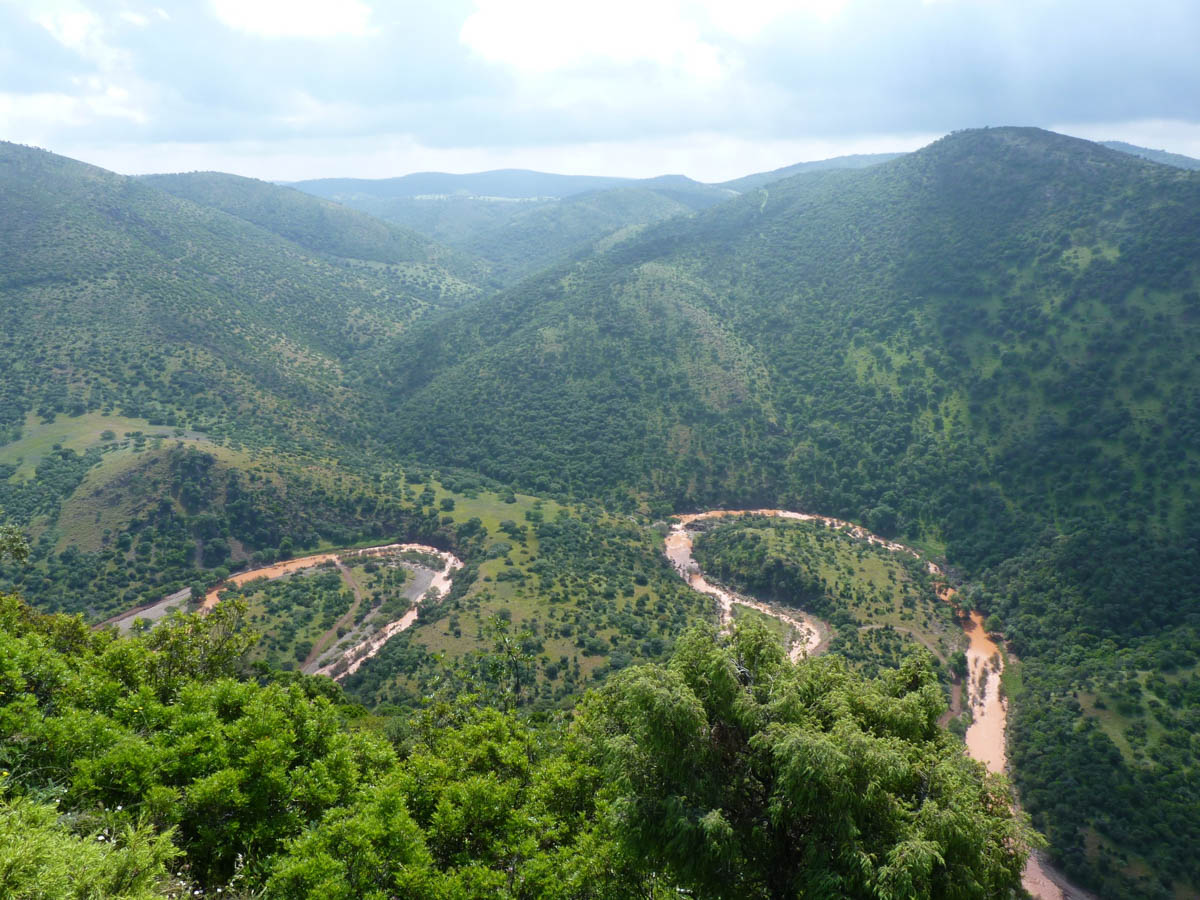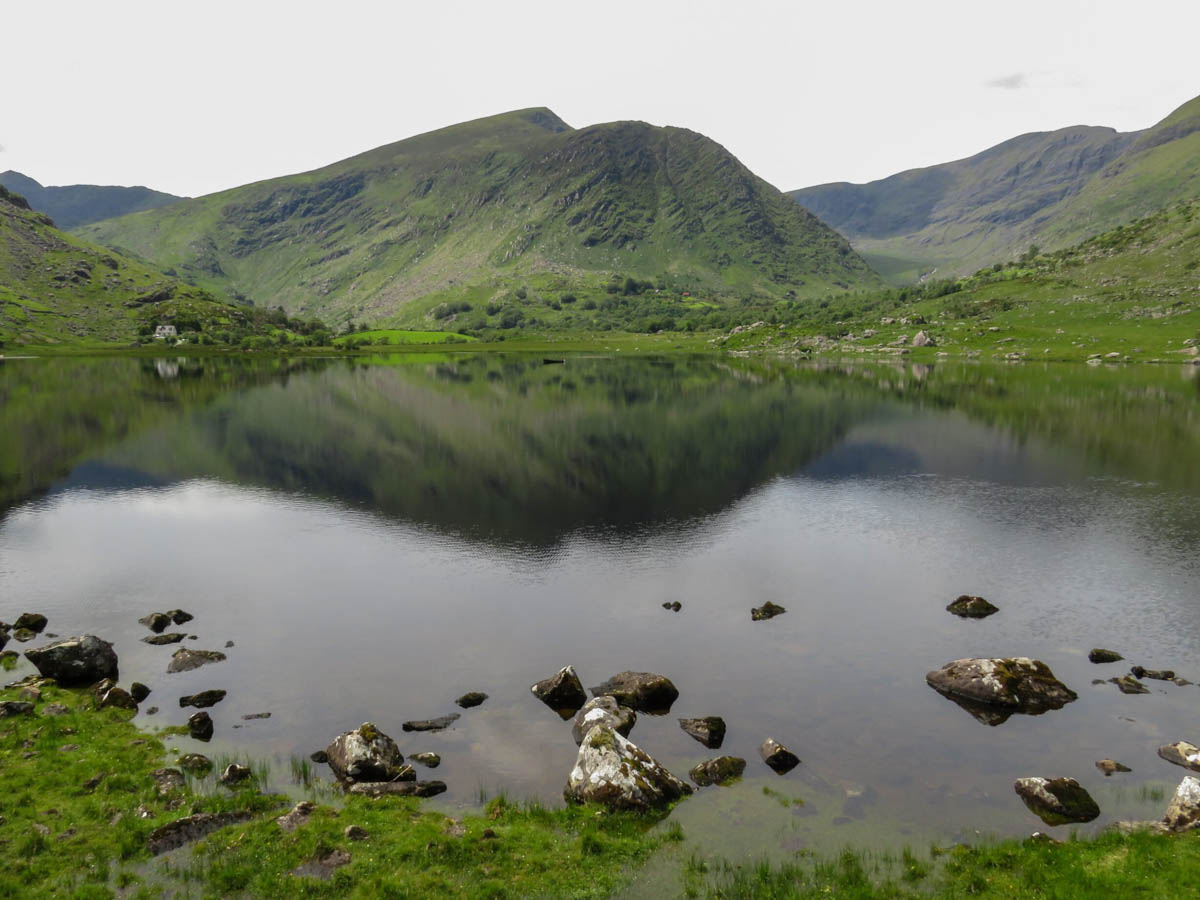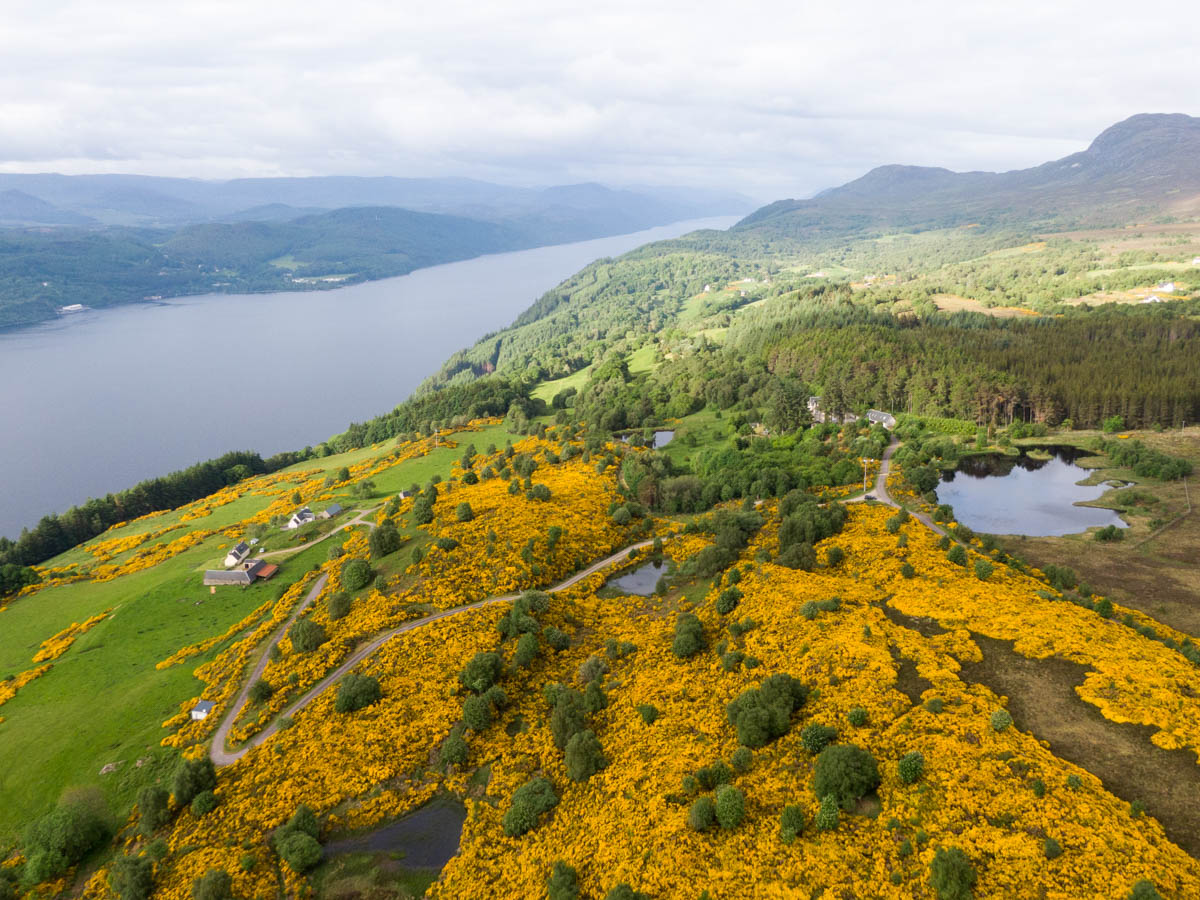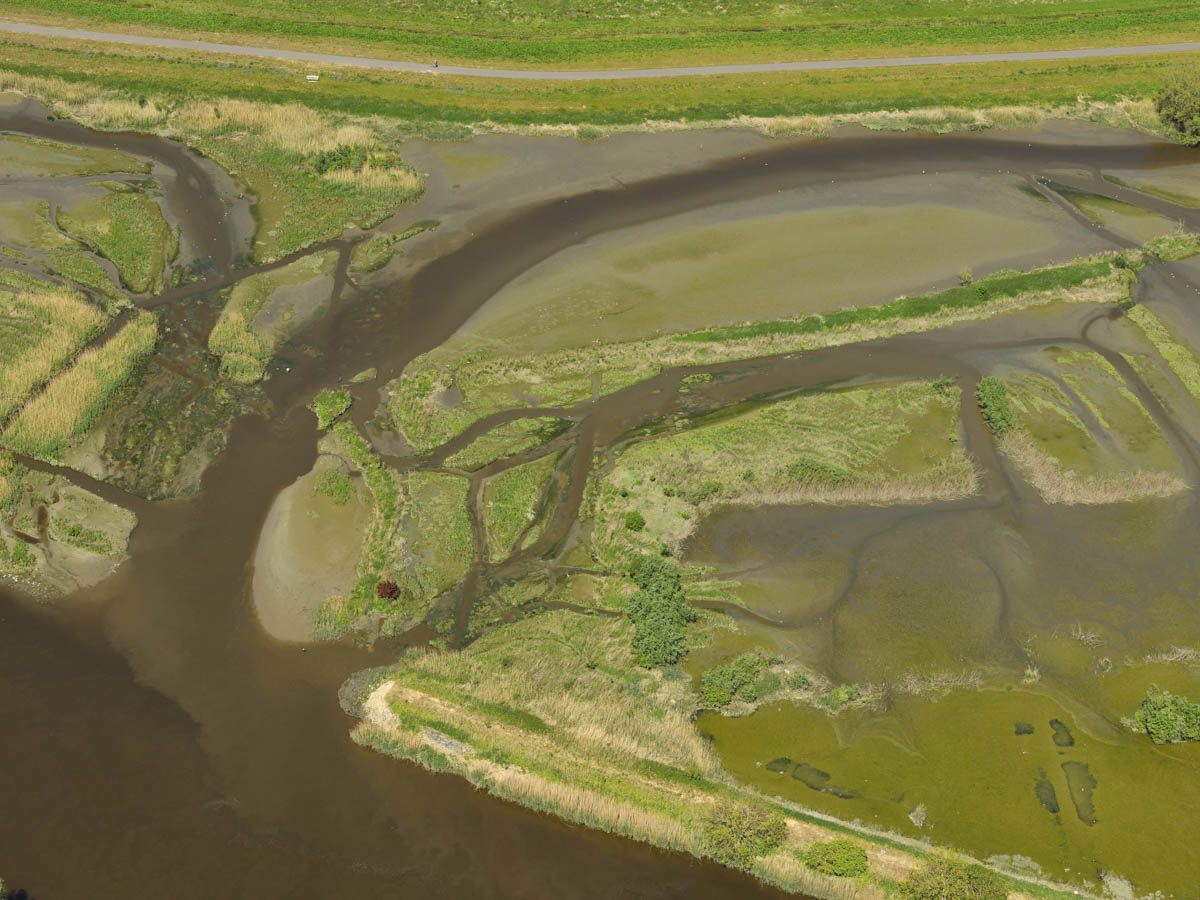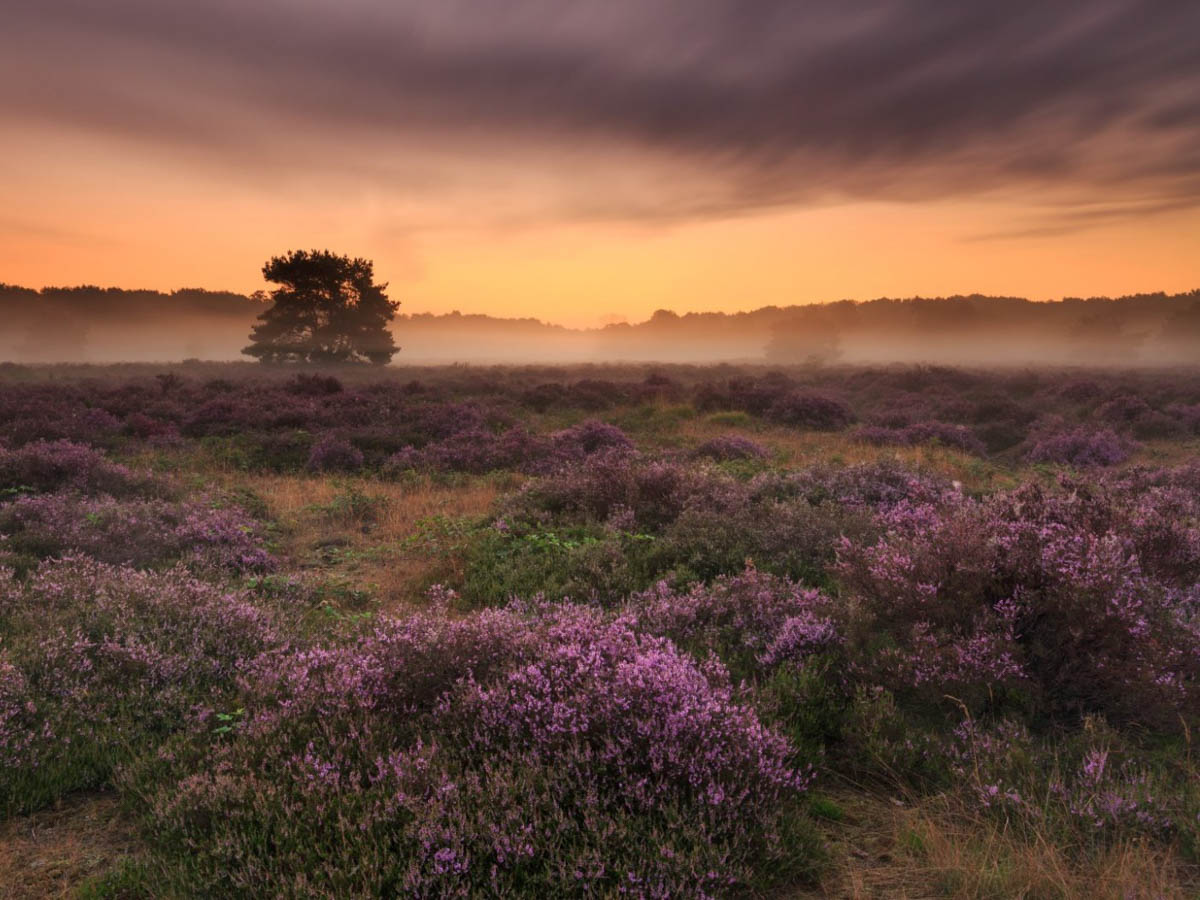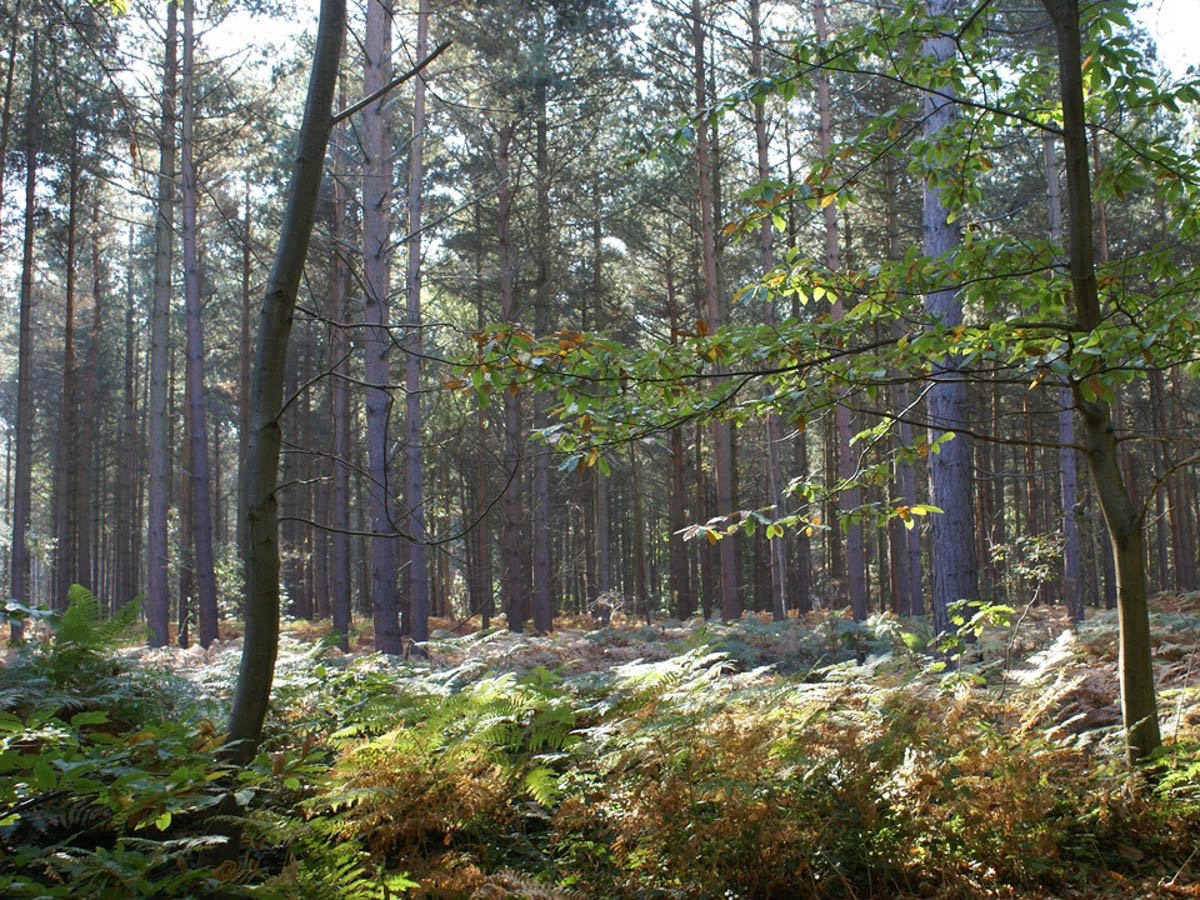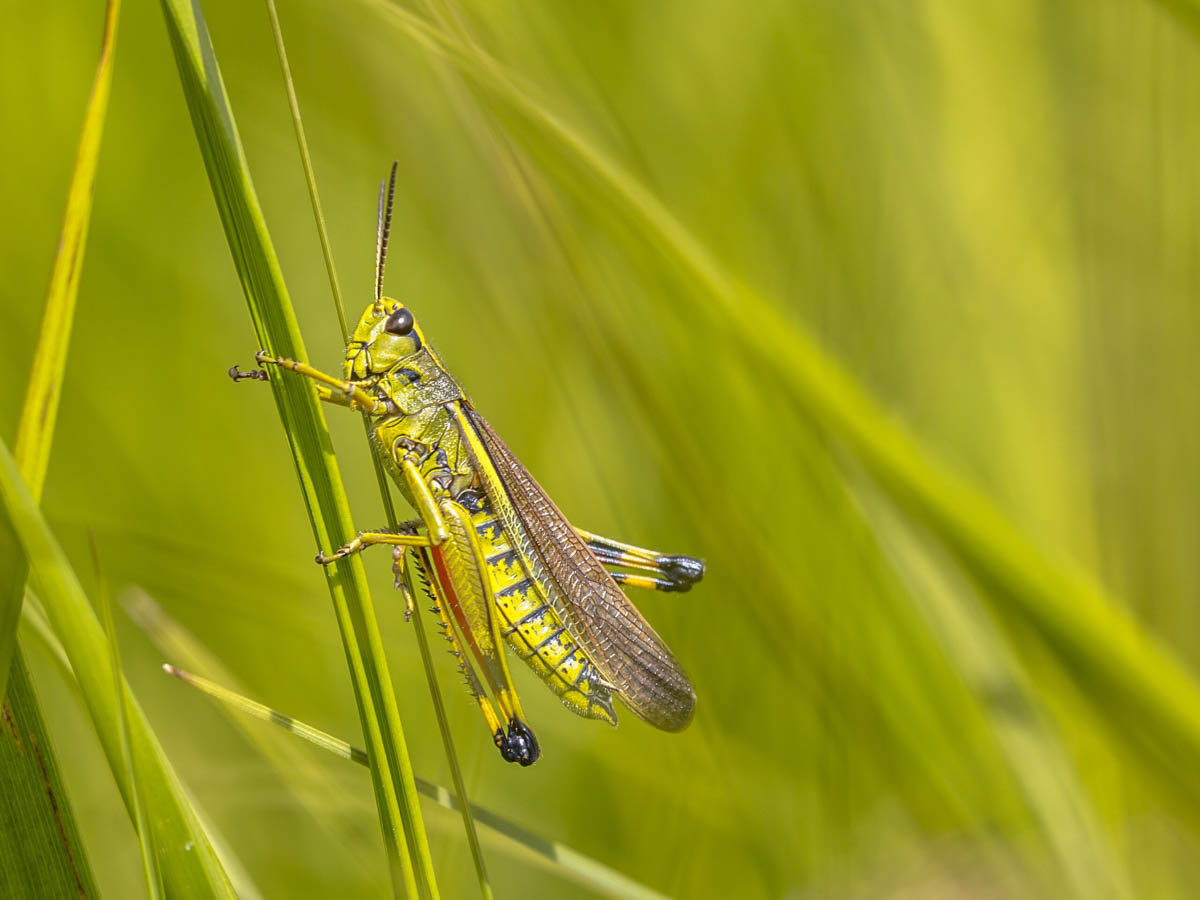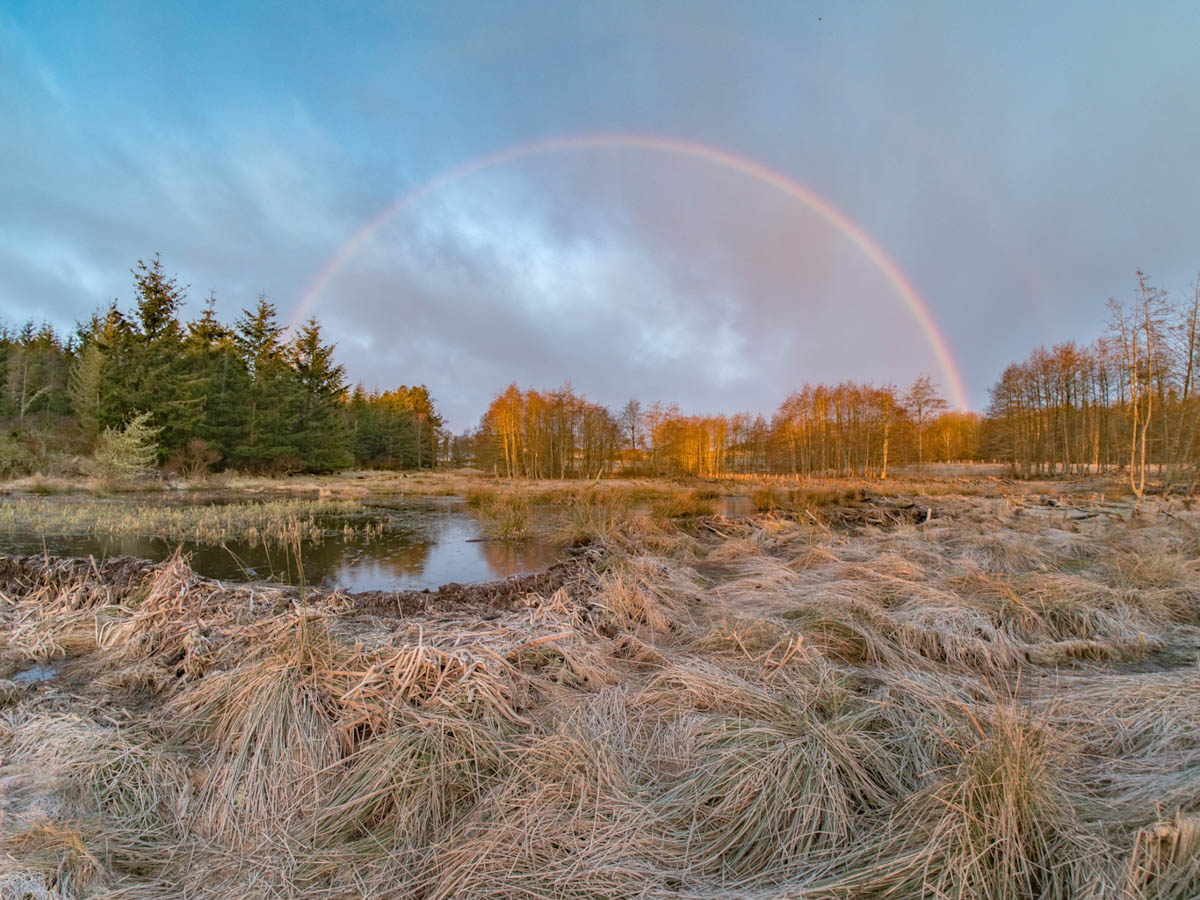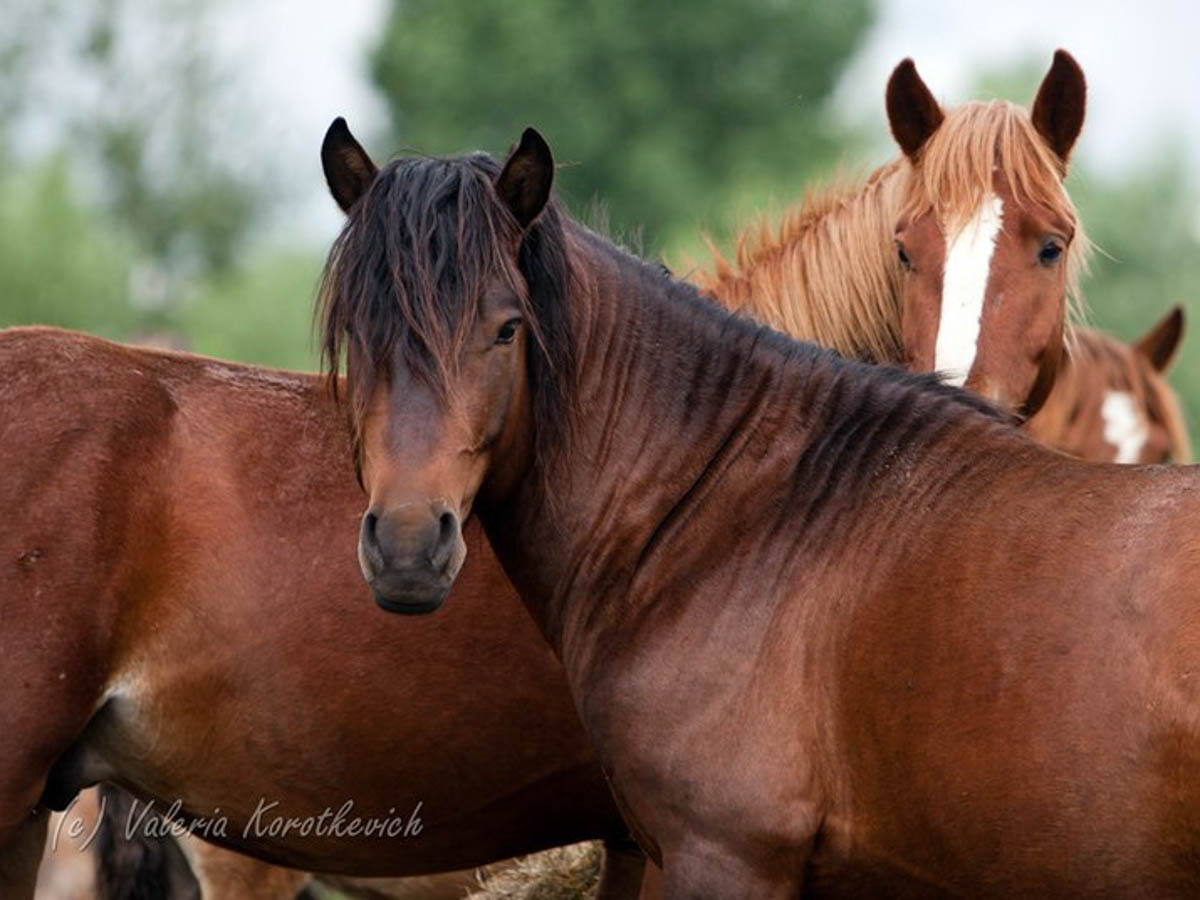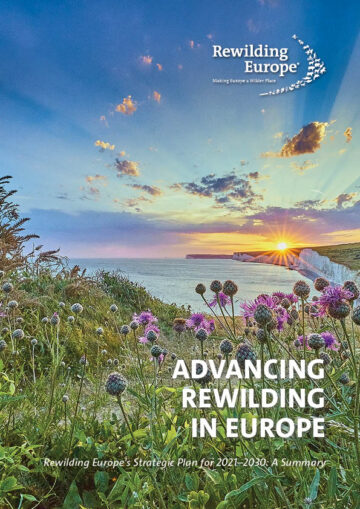Dear friends, colleagues and partners,
At the start of this New Year I am really excited to share with you our latest Rewilding Updates. With Rewilding Europe continuing to grow, this special internal newsletter for partners and associates outlines our most important developments in 2021. The last 12 months have not only boasted several real highlights, but have also seen us take many smaller steps forward in our rewilding journey. Numerous rewilding interventions have taken place across our rewilding landscapes, which now number nine following the instatement of the Affric Highlands in September.
The year 2021 also marked the start of our tenth anniversary – a time to celebrate … and kick on! In collaboration with our landscape leaders we have developed a new strategy for 2030 which was approved by the Supervisory Board in November. Ambitious new objectives have been set which we will now work towards over the next rewilding decade!
I wish you happy reading and wild regards,
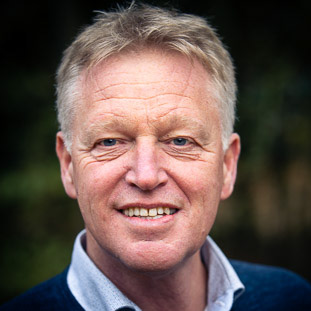
Frans Schepers
Executive Director
Rewilding Europe
Key milestones and events
FIND OUR NEWEST UPDATES 2022-1 HERE
Looking back at an eventful and productive year, we can reflect on a number of major achievements and milestones.
A transformative decade
What a difference a decade can make. Back in 2011, when Rewilding Europe was founded, rewilding was a little-known concept, practised in a few select European locations. As Rewilding Europe began to celebrate its tenth anniversary at the end of June 2021, the contrast was both dramatic and hugely encouraging.
Interest in rewilding, which has shaken up the conservation sector, is now at an all-time high, with an ever-growing number of initiatives generating positive impact across Europe. Over the last 10 years, Rewilding Europe has played a pioneering role in this evolution, with its action-oriented, “showing by doing” philosophy resulting in a pan-European network of high-profile operational areas. With the UN Decade on Ecosystem Restoration kicking off in 2021, the rewilding movement has real momentum, belief and ambition.
Time to celebrate
Rewilding Europe’s tenth anniversary celebrations kicked off on June 29 when members of its international central team gathered face-to-face in Nijmegen. They visited a number of rewilding areas in the Netherlands, including new Dutch members of the European Rewilding Network, who all received a certificate of their membership.
In the evening of June 29 a celebratory special talk show entitled “Embracing rewilding in Europe” reflected on Rewilding Europe’s first 10 years, as well as the future of European rewilding. Hosted by famous Dutch TV presenter Humberto Tan, the show was broadcast live to partners and associates of Rewilding Europe from the Millingerwaard – one of the first rewilding sites in the Netherlands – and then to a general audience later in July.
Impressive results of three EU LIFE Grants
The autumn saw the finalization of three EU LIFE Grants, with successful closing seminars and Layman’s reports being published. The results of these three 5-year grants are impressive, with the European Union’s LIFE programme providing invaluable support between 2016 and 2021.
Rewilding Europe and WWF Romania have been working to reintroduce European bison in the Southern Carpathians since 2014. Rewilding efforts, involving multiple translocations and releases, have seen the area’s free-roaming bison population grow to over 100 animals (including nearly 40 calves born in the wild), representing the largest bison population in Romania.
The EU LIFE grant on ‘Conservation of black and griffon vultures in the Rhodope Mountains’ focused on the recovery and further expansion of the black and griffon vulture populations in the Bulgarian/Greek cross-border area of the eastern Rhodope Mountains. We have achieved and even exceeded the expected results as the black vulture population remained stable while the griffon vulture pairs increased from 91 in the beginning of the project to 117 pairs in 2021.
On request of the EU, the EU GrazeLIFE grant aimed to assess how land-use models that are based on grazing systems (from intensive to extensive grazing and from livestock to (semi)wild herbivores) can offer (cost-)effective solutions to these challenges. GrazeLIFE reflected on the current policies, legislation and subsidy systems regarding extensive grazing of large herbivores. As shown, extensive grazing can help to protect and restore vegetation mosaics with high levels of biodiversity and carbon sequestration in soil and vegetation. These mosaics are also a lower fire hazard than closed shrub or forest- vegetation. GrazeLIFE concluded with 45 practical recommendations.
Communications highlights
FIND OUR NEWEST UPDATES 2022-1 HERE
In 2021 our communications efforts helped to drive Europe’s burgeoning rewilding movement onward, with a number of real highlights.
Partnering with the UN Decade for Ecosystem Restoration
In February, Rewilding Europe became an official supporting partner of the UN Decade on Ecosystem Restoration. The UN Decade, which launched on World Environment Day (June 5) and runs through to 2030, aims to prevent, halt and reverse the degradation of ecosystems on every continent and in every ocean.
The new partnership recognises Rewilding Europe’s pivotal role in promoting rewilding as a mainstream approach to ecosystem restoration. As we embark on the UN Decade, it underlines the need to scale up rewilding now.Rewilding at scale can absorb enormous amounts of carbon, restore natural systems, and make the planet a better place to live. But we must act now – using rewilding principles and deploying legally binding targets – to ensure its positive impact is delivered at the necessary scale over the next decade and beyond.
World Rewilding Day: are you #ReadyToRewild?
On 20 March 20, 2021, people across the planet celebrated the first-ever #WorldRewildingDay, raising global awareness of rewilding and our need for it. Rewilding initiatives from six continents joined forces, issuing a join statement calling for the global restoration and rewilding of nature.
World Rewilding Day was launched by the Global Rewilding Alliance, which now boasts more than 120 supporting organisations from across world engaged in a wide range of rewilding actions. Rewilding Europe is a proud partner of this initiative, representing many of our partners across the beautiful continent where we operate.

Annual Review 2020: towards a rewilding decade
Rewilding Europe’s latest Annual Review was published in June, showcasing the progress that we made in 2020 and building a compelling case for the immediate scaling up of rewilding. Presenting key results from the eight rewilding areas that were operational in 2020, the review also included a number of extended feature stories. Accompanied by imagery from some of Europe’s top nature and wildlife photographers, these stories gave readers a broader and deeper perspective on rewilding and its evolution, and the wide range of benefits it offers to both people and nature. Story topics included natural forest regeneration, the development of rewilding science, the ongoing comeback of the European bison, and a new way of measuring rewilding progress. These pieces were complemented by more practically focused articles detailing Rewilding Europe’s efforts in each of our rewilding landscapes.
Impact stories
Over the course of the last decade, rewilding has had an increasingly beneficial impact on landscapes and lives across Europe. To celebrate our ten-year anniversary, we are publishing a series of extended feature stories about the growth of rewilding impact in Europe since 2011, including in our own operational areas. In August, the series kicked off with a story on the European bison, which has made a remarkable comeback since its near extinction at the start of the twentieth century.
Published in October, the second impact story focused on the so-called “Circle of Life” – involving myriad animals, plants, fungi and microorganisms. This endless loop, which keeps all living things sustained, is perhaps most obvious when a large animal dies or is killed in nature, and the resultant carcass is rapidly consumed, broken down and recycled.
Published in December, the third impact story described how the European rewilding movement has evolved since 2011, why rewilding is becoming more and more popular, and how it offers compelling reasons to get involved.
Online seminars and symposia
Today we are organising a growing number of online meetings, seminars and symposia, addressing a wide range of rewilding topics. In 2021 we organised more than 10 such online gatherings, involving many hundreds of participants from dozens of countries. Through the European Rewilding Network, for example, seminars were organised on nature and business (January), natural grazing (April), and measuring rewilding progress (October).
We held well-attended seminars on World Rewilding Day (March), the launch of the UN Decade (June), our tenth anniversary “talk show” (June), and the launch of the European Young Rewilders (July). Rewilding Europe representatives were also guest speakers at many events – talking about wilder parks, for example, at the EUROPARC Conference (October).
The end of three LIFE grants in 2021 also saw closing seminars: European bison (September), vultures (September), and GrazeLIFE (December). The latter drew a particularly impressive audience of 335 participants from 35 countries.
Three new rewilding landscape websites
In 2021 the Oder Delta, Central Apennines and Rhodope Mountains rewilding areas all launched their own websites, following the Rewilding Europe style and branding. These are presented in national languages, as well as in English.
Together with the Greater Côa Valley and Danube Delta, this means five landscapes now have their own dedicated website. In 2022 we also hope to launch websites for the Velebit Mountains and Swedish Lapland rewilding areas.
Monitoring & impact
Today, Rewilding Europe’s dedicated and pioneering rewilding teams are taking big steps forward in the field as they work to protect and restore wild nature. But exactly how big?
Partnership with EarthRanger
In 2021 we enhanced our internal geospatial platform to support planning, monitoring and research across all of our rewilding landscapes. GIS capacity is present or being developed in most of our rewilding teams to ensure optimal use of the platform, guided by an expert team at the central level.
Measuring and continually monitoring rewilding impact is critical if we are to improve decision making and scale up rewilding in the most effective way possible. With this in mind, a new partnership between Rewilding Europe and EarthRanger kicked off in 2021 to enhance data collection, monitoring and decision making across all of Rewilding Europe’s operational areas.

EarthRanger is a user-friendly, online platform, developed by Vulcan Inc. to help protected area managers, ecologists and wildlife biologists stay informed and make better wildlife conservation-related decisions.
The rollout of EarthRanger in Rewilding Europe’s rewilding areas is the first time the platform has been deployed in Europe. It comes pre-integrated with Tableau (data visualisation and analysis software) and integrates with ArcGIS (software for storing, managing and sharing geospatial information), which has also been rolled out across Rewilding Europe’s rewilding areas.
EarthRanger has so far been rolled out in the Velebit Mountains, Rhodope Mountains, Greater Côa Valley and Southern Carpathians, with data now regularly uploaded to the system by local rewilding teams.
Measuring rewilding progress
Data collected through our geospatial, monitoring and research work has already been used for a number of important scientific publications. In September 2021, for example, a paper in the scientific journal Ecography outlined the groundbreaking application of a new way of evaluating rewilding progress – first developed by Rewilding Europe and partners in 2018 – across seven of Rewilding Europe’s operational areas. The paper was authored by Rewilding Europe’s Rewilding Researcher Josiane Segar, together with rewilding experts from the German Centre for Integrative Biodiversity Research (iDiv) Halle-Jena-Leipzig, Martin Luther University Halle-Wittenberg (MLU), and other European institutions. The results it outlined reveal that encouraging progress has been made at site level, but that challenges to upscaling also exist.
Rewilding Landscapes – latest from the field
FIND OUR NEWEST UPDATES 2022-1 HERE
An overview of the most important achievements in our existing and prospective rewilding landscapes.
Welcome Affric Highlands!
Following three years of consultation with the pioneering rewilding charity Trees for Life and other Scottish partners, Rewilding Europe was delighted to announce the launch of an ambitious landscape-scale rewilding initiative called “Affric Highlands” in 2021. This landscape stretches from Loch Ness on the east coast of the Central Highlands to Kintail in the west – taking in Glens Cannich, Affric, Moriston and Shiel. Rewilding will enable nature to recover here, boosting habitat connectivity, wildlife diversity, and social and economic opportunities. The Affric Highlands landscape was officially welcomed by Rewilding Europe on September 19, during a ceremony attended by partners, stakeholders and community members at the Glenurquhart Public Hall in Drumnadrochit.
The rewilding movement in Scotland is growing like never before. It has captured the public imagination and inspired those with land to make better use of it for nature and people. With the Scottish Rewilding Alliance (SRA) calling for Scotland to become the world’s first “rewilding nation”, the ambition in the Affric Highlands is to take this newfound enthusiasm to the next level, employing bold rewilding action to address our climate and biodiversity emergencies. Building partnerships and an alliance with like-minded landowners lies at the heart of the thirty- year Affric Highlands vision. In November, Stephanie Kiel became the new Affric Highlands team leader.
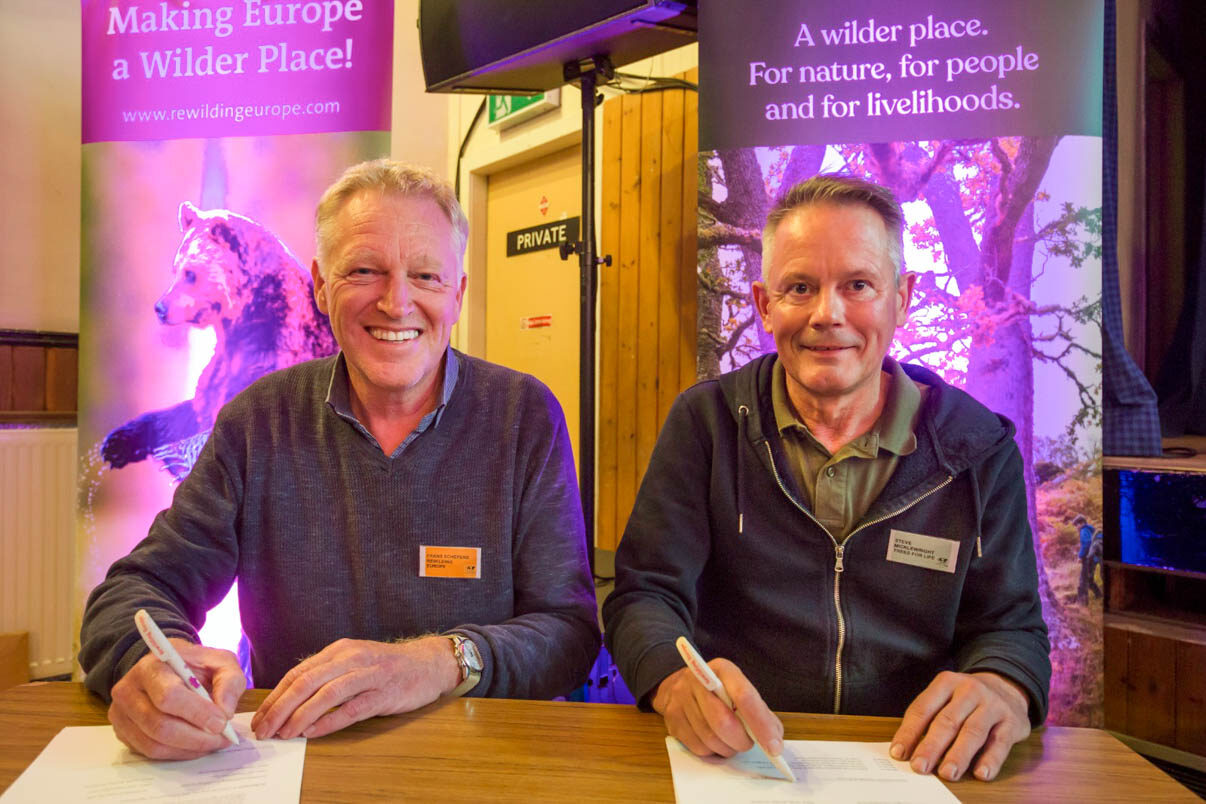
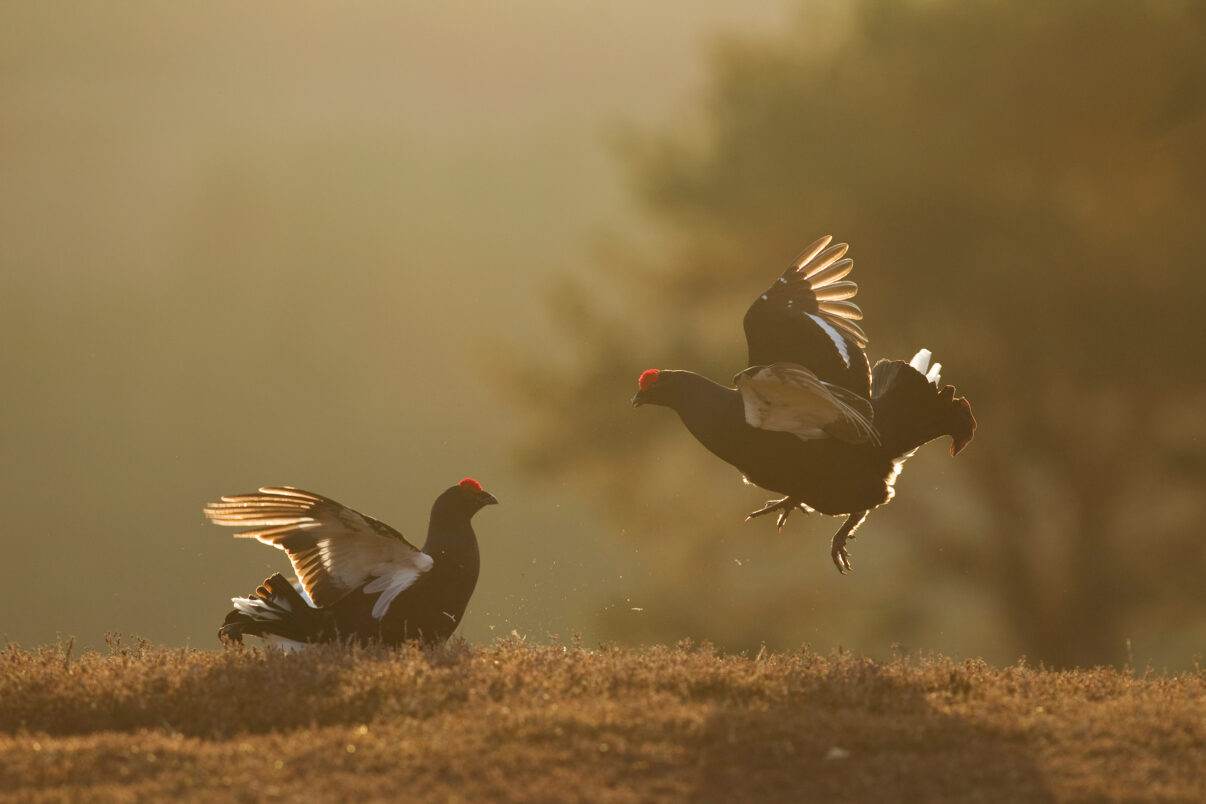
European Rewilding Network
FIND OUR NEWEST UPDATES 2022-1 HERE
The European Rewilding Network (ERN) saw 10 new members join in 2021, taking the overall membership to 76 across 27 countries. The ERN also organised a number of well-attended online seminars throughout the year, addressing a wide range of rewilding topics. In November, a face-to-face meeting was held in the Central Apennines of Italy, involving 36 rewilding practitioners from 12 different countries.
Organisation & fundraising
FIND OUR NEWEST UPDATES 2022-1 HERE
Rewilding Europe took major steps forward in growing its internal organisation, governance, and internal management. The organisation now employs 29 members in the Central Team, comprising 18 full time equivalents, based in nine different countries. Our home base is in Nijmegen, the Netherlands.
Supervisory Board
In April, Jan Derck van Karnebeek was appointed as the new chairman of our Supervisory Board, with Wiet de Bruijn stepping down from the position after nearly a decade of service. An interview with Wiet, detailing his experience with Rewilding Europe, was published in the Annual Review 2020 and is well worth reading. Wiet may be stepping down as chairman, but he will remain associated with Rewilding Europe as a donor.
Jan Derck’s array of business skills and huge commercial experience were gained during a highly successful 29-year career at Dutch brewing company Heineken. Such attributes will prove invaluable towards upscaling, strategic development and team building in Rewilding Europe.
Along with Jan Derck, we also welcomed Sabine Hoefnagel as a member of the Supervisory Board. With an academic background in law and currently based in the UK, Sabine has focused on sustainability throughout her career, with 25 years’ professional experience in sustainability consulting across a broad range of sectors.
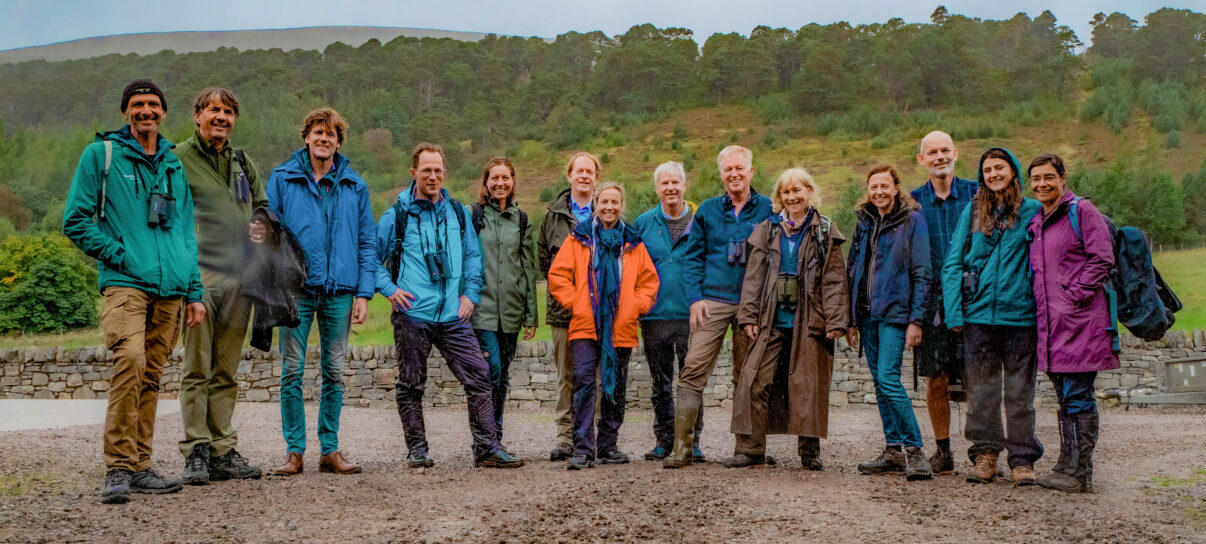
Central Team changes
At central level we saw important changes. Firstly, Rob Stoneman left as Head of Landscapes to return to the UK Wildlife Trusts early in the year. We were very excited to welcome Fabien Quétier, based in France, who took up this position in December. Willem Nolens, Head of Finance & Operations left in December, with his role assumed by Johan Booij on an interim basis. We will continue our search to fill this position permanently during 2022.
Wouter Helmer, one of the co-founders of Rewilding Europe, retired and left the organisation at the end of the year. Despite this change, Wouter will still be available as a volunteer on specific topics, and we will definitely make use of that! Wouter has played a key role in our initiative right from the start, and we will publish an interview with him about his departure from Rewilding Europe soon.
New team members that joined last year were Christian van Maaren (enterprise officer), Lucy Kilkens (Finance & Operations Officer, replacing Floor Peters for maternity leave), and Gordon Eaglesham (writer and editor).
Fabien Quétier
Head of Landscapes
Johan Booij
Head of Finance & Operations (a.i.)
Christian van Maaren
Enterprise Officer
Lucy Kilkens
Finance and Operations Officer
Gordon Eaglesham
Writer and Editor
Local boards and teams
Last year also saw important strengthening in the boards of local rewilding entities. New board members were appointed in the Rhodope Mountains (Milena Nikolova), Velebit Mountains (Silvija Zec, Kresimir Macan and Vedran Lucić) and Central Apennines (Antonio Carrara, Donato Pinto). Discussions were also held with Rewilding Sweden to strengthen the board, which we expect will bring new members in 2022. We also started talks with WWF in Romania and WWF Central and Eastern Europe to explore new ways of cooperating in the near future. We also continued to provide support and advice to the boards of Rewilding Spain and Rewilding France, as our future partners in rewilding initiatives in these countries.
In the rewilding areas, new team members that came on board were Nicolò Borgianni and Jan-Niklas Trei (Central Apennines), Stephanie Kiel (Affric Highlands), Andrea Perić (Velebit Mountains), and Robert Negru (Danube Delta). Roger Olsson continued to act as Team Leader for Swedish Lapland, with Karin Åström playing a key role developing the initiative over the year.
Nicolò Borgianni
Vulture Field Officer
Central Apennines
Jan-Niklas Trei
GIS Analyst
Central Apennines
Stephanie Kiel
Team Leader
Affric Highlands
Andrea Perić
Communications Officer
Velebit Mountains
Robert Negru
Wetland Restoration Officer
Danube Delta
Karin Åström
Programme Developer
Swedish Lapland
New partnerships and fundraising
In 2021 we made great progress in our fundraising efforts, with Rewilding Europe receiving a number of major grants. It is remarkable to see the financial support of corporates and companies growing significantly.
Firstly, a new partnership with the German shoe company Wildling Shoes took off with a five-year commitment through 1% for the Planet, allocated to the Rhodope Mountains. A three-year partnership with Augmentum Foundation is supporting rewilding in the Velebit Mountains, while a new partnership with Exodus Travel is supporting our pioneering work on rewilding credits in the Central Apennines. Contribution from FedEx Europe was received for general support.
We were hugely excited when the Dutch Postcode Lottery, after a thorough evaluation in 2021, decided to continue its support for Rewilding Europe over the next five years. For the Central Apennines, we saw our proposal for a 5.3 million euro, five-year EU LIFE Nature grant finally approved, which is also excellent news.
In 2021 we also sealed a new partnership with the ForestPeace Foundation, while we were completely surprised by an unrestricted donation of 1 million euros from a private donor in Denmark just before Christmas. We also grew our private donor income further, with a number of new participants committing for a five-year period. It cannot be emphasised enough that this growing financial support is a result of the joint efforts of members across our entire European team, building our initiative and delivering so many inspiring and meaningful results and impacts. Direct financial support to the rewilding teams is also growing, as a result of increasing capacity and our joint approach.
As a result of all these efforts, we saw the central level income grow from 6.1 million euros in 2021 to a minimum of 7.2 million euros in 2022 (it is particularly important that the proportion of unrestricted funding is also growing). We sincerely thank all of our financial supporters and partners, both small and large, for their trust, encouraging support, and critical contributions to our work.
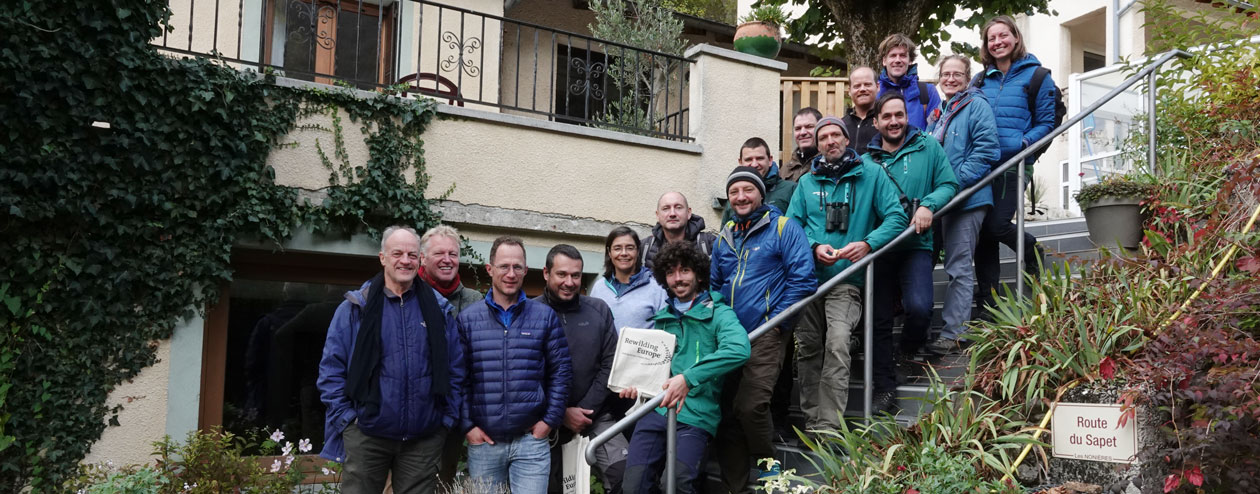
Rewilding Europe Team Meeting in Vercors, France
Due to the Covid-19 pandemic, the Rewilding Europe team was not able to meet face-to-face for nearly two years. However, in October a 24-person group managed to meet in the Vercors in France, with many of us able to make the journey by train. In the setting of the beautiful Vercors Regional Park, an inspiring environment with huge potential for rewilding, it turned out to be a very productive meeting.
This provided a great opportunity to share the latest progress made in the rewilding areas and at central level in much detail. Key topics addressed were the finalisation of Strategy 2030, and how we will deliver on its new objectives (see also below). Specific topics we addressed and discussed extensively were land access, rewilding credits, partnership building, HR and governance, fundraising, building a European rewilding coalition, monitoring, and a new wildlife comeback initiative.
In addition to the technical meetings, we also met with members of the emerging Rewilding France organisation to discuss future ambitions, members of Tour du Valat to learn about restoration work in the Camargue, and with representatives of the regional government during several walks in the regional park. During the hikes we were happy to observe bearded vultures, golden eagles, Alpine chamois, wolf tracks, and many more.
This fantastic team building week saw everyone leave with lots of inspiration, fresh insight and plans for the future.
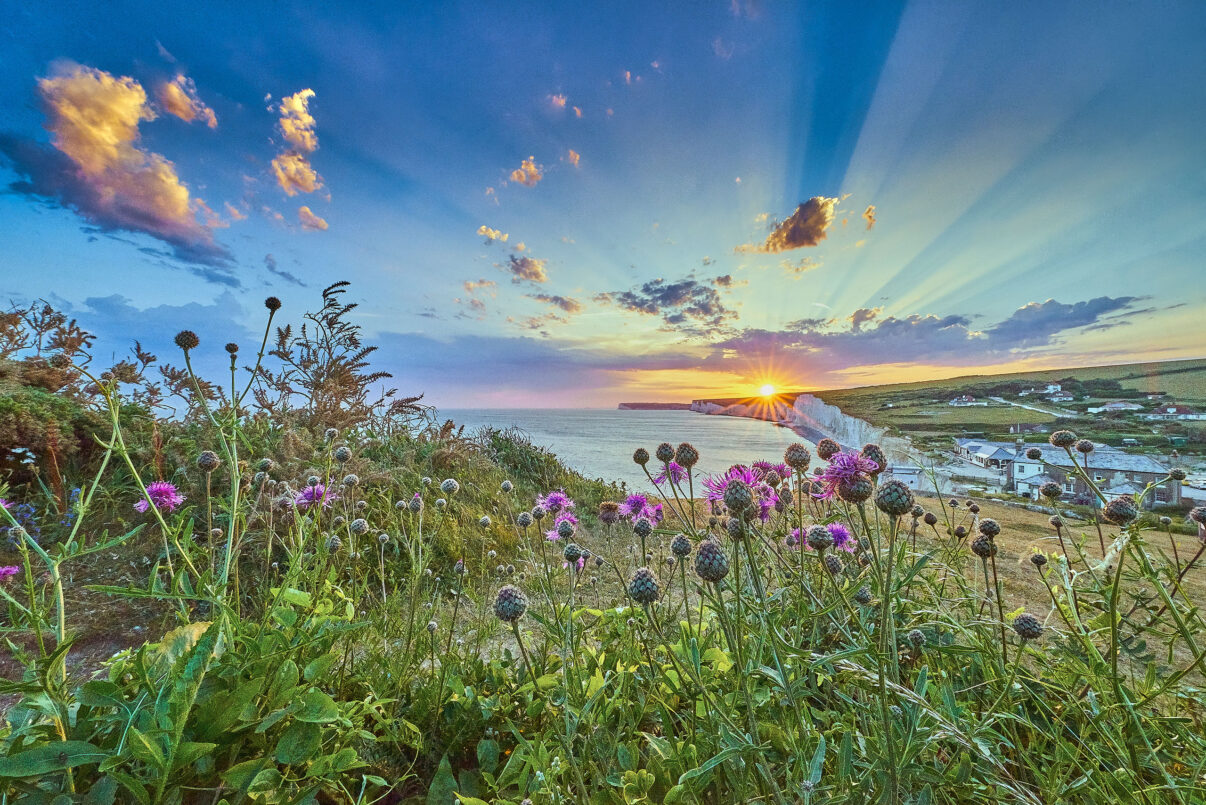
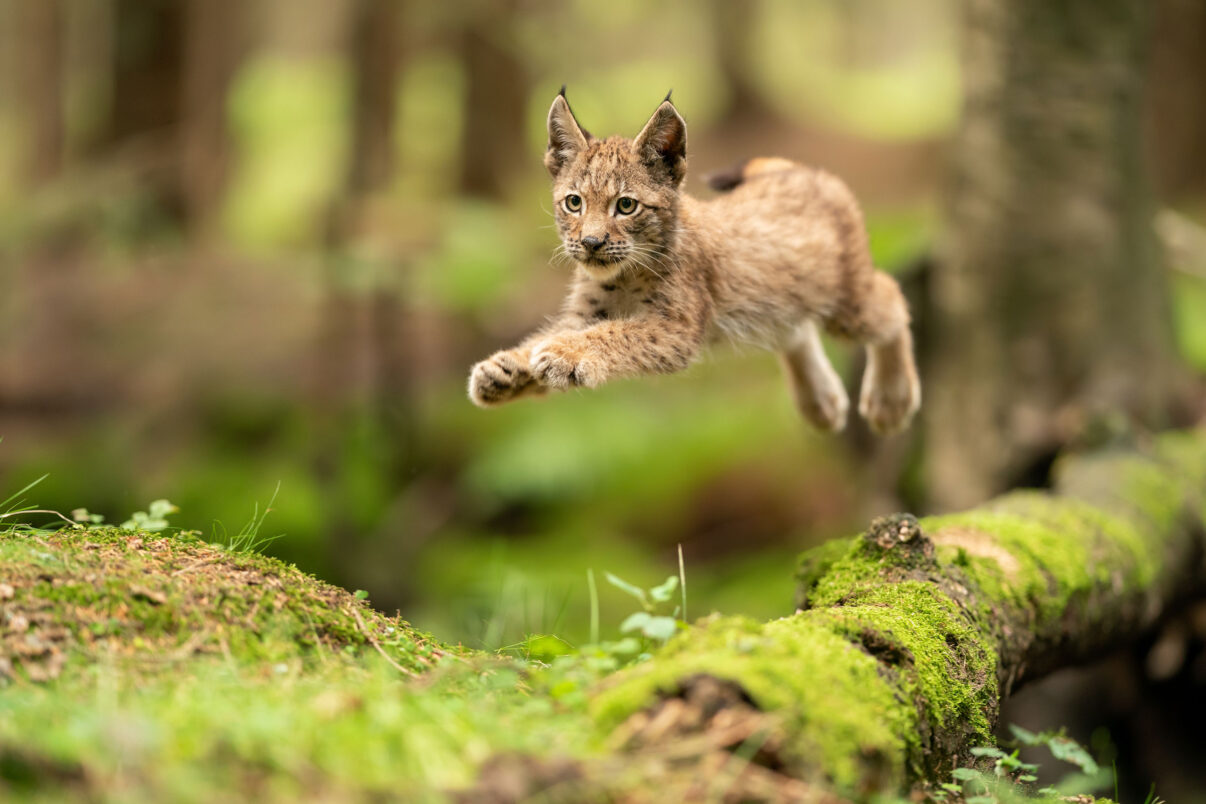
A new strategy for 2030
The last 10 years have established a solid base for European rewilding – it is now essential that we kick on and accelerate the scaling up process. With this in mind, Rewilding Europe has developed “Strategy 2030” – a pioneering and ambitious plan for our initiative over the next decisive decade. This has been developed in close cooperation with the our nine rewilding landscape leaders across Europe, and sets very tangible targets and milestones for 2030.
Strategy 2030 is focused on maximising the impact of Rewilding Europe’s twin demonstration and catalysing roles, as we work to deliver wilder nature at landscape scale across Europe. The multiple benefits that this will bring lie at the heart of nature-based solutions to the environmental and societal challenges confronting the region, including the climate and biodiversity emergencies, and give substance to the rhetoric of “growing back smarter and greener” from the Covid-19 pandemic.
The objectives of Strategy 2030 can be broken down into four core components – “Wilder Nature”, “Nature for People”, “Building Engagement” and “Scaling Up”. Over the next 10 years we are planning to expand the number of rewilding landscapes in which we showcase practical rewilding from 10 to 15. Within these landscapes we will aim to actively practice and demonstrate rewilding ourselves, and with local partners, on a total of 500,000 hectares. The five new landscapes will include marine and coastal ecosystems for the first time, extending across a minimum of 8 million hectares. To ensure meaningful results and impact, we have committed to work in these landscapes for a minimum period of 20 years.

